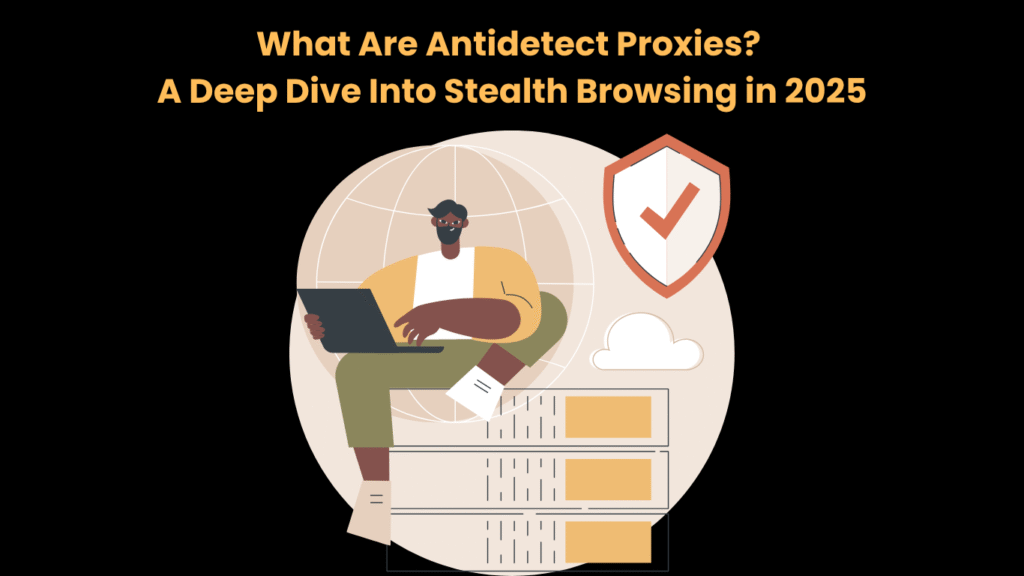In today’s digital landscape, privacy is not a luxury—it’s a necessity. From marketers to cybersecurity experts, an increasing number of individuals and businesses are turning to antidetect proxies to bypass detection mechanisms, ensure anonymity, and automate tasks without being flagged. But what exactly are antidetect proxies, how do they work, and why are they gaining so much attention in 2025?
Let’s dive into the world of antidetect proxies and understand their role in secure and undetectable web activity.
What Are Antidetect Proxies?
Antidetect proxies are specially designed proxy services that, when paired with an antidetect browser, allow users to mimic real user behavior online without being detected by websites or security systems. Unlike standard proxies that simply mask your IP address, antidetect proxies are optimized to avoid advanced fingerprinting techniques.
Websites use a variety of digital fingerprints—such as browser type, time zone, screen resolution, antidetect browsers for Android WebRTC data, and even audio contexts—to identify and track users. Antidetect proxies, in combination with antidetect browsers like Dolphin, Multilogin, or GoLogin, help you manage these fingerprints to make your online identity appear genuine and distinct.
How Antidetect Proxies Work
Antidetect proxies function in tandem with a browser that can manipulate and spoof your digital fingerprint. Here’s how they typically work:
- IP Masking: The proxy replaces your real IP with a different one, often from a residential or mobile IP pool, making you appear to be browsing from a different location or device.
- Fingerprint Randomization: Tools like antidetect browsers allow you to randomize key identifiers—such as canvas data, WebGL, language settings, user-agent strings, and more.
- Session Isolation: Each browsing profile can run with its own isolated environment, cookies, and local storage, mimicking separate real users.
- Bypassing Detection Algorithms: Because of the high fidelity of emulated real user behavior, antidetect proxies can bypass bot detection systems like Cloudflare, Akamai, and PerimeterX.
This multi-layered approach allows marketers, researchers, and automation experts to operate multiple accounts, conduct scraping, and bypass regional blocks without raising red flags.
Common Use Cases for Antidetect Proxies
Antidetect proxies are powerful tools with many legitimate use cases:
- E-commerce Automation: Dropshippers and retailers use them to manage multiple seller or buyer accounts on platforms like Amazon, eBay, and Etsy without getting flagged.
- Social Media Management: Agencies manage dozens or hundreds of Instagram, Facebook, or TikTok accounts, each appearing to originate from different devices and regions.
- Ad Verification: Companies use antidetect proxies to verify how their ads appear in different regions or to detect ad fraud.
- Sneaker Botting and Ticketing: Bots running on antidetect-proxies gain an edge by mimicking real human buyers during high-demand product drops.
- Market Research and Web Scraping: Businesses can collect public data at scale without triggering blocks or bans.
- Privacy and Security: Individuals concerned about online tracking use these proxies to browse without leaving a digital footprint.
Types of Antidetect Proxies
There are several categories of proxies used in antidetect scenarios:
- Residential Proxies: These use real IP addresses from ISPs, making them appear as genuine home users. They’re the most stealthy but also the most expensive.
- Mobile Proxies: Use 3G/4G/5G connections from mobile carriers. Excellent for high-trust scenarios like social media.
- Datacenter Proxies: Fast and reliable, but more easily flagged due to their unnatural hosting origins.
- Rotating Proxies: Automatically rotate your IP at intervals, ideal for scraping and large-scale automation.
For best results, most antidetect setups rely on residential or Reliable mobile proxies, often combined with customized fingerprint settings.
Are Antidetect Proxies Legal?
Antidetect-proxies are legal tools—but their legality heavily depends on how they are used. Managing multiple accounts, conducting ad research, or bypassing geo-restrictions are often acceptable. However, using them for malicious purposes like fraud, phishing, or illegal data scraping is against the law.
It’s critical to stay informed about the Terms of Service of the platforms you interact with, and to operate within ethical and legal boundaries.
Read More: What is Cybersecurity? And it’s importance, benefits and essential guide
Conclusion: The Future of Online Anonymity
In 2025, with websites becoming smarter and detection methods more sophisticated, the need for antidetect technologies is greater than ever. Antidetect-proxies, when combined with fingerprint-masking browsers, offer a potent solution for anyone who needs stealth, automation, or multi-account capabilities.
Whether you’re an e-commerce entrepreneur, a cybersecurity researcher, or simply someone who values privacy, understanding how antidetect proxies work is key to navigating the modern web undetected.




